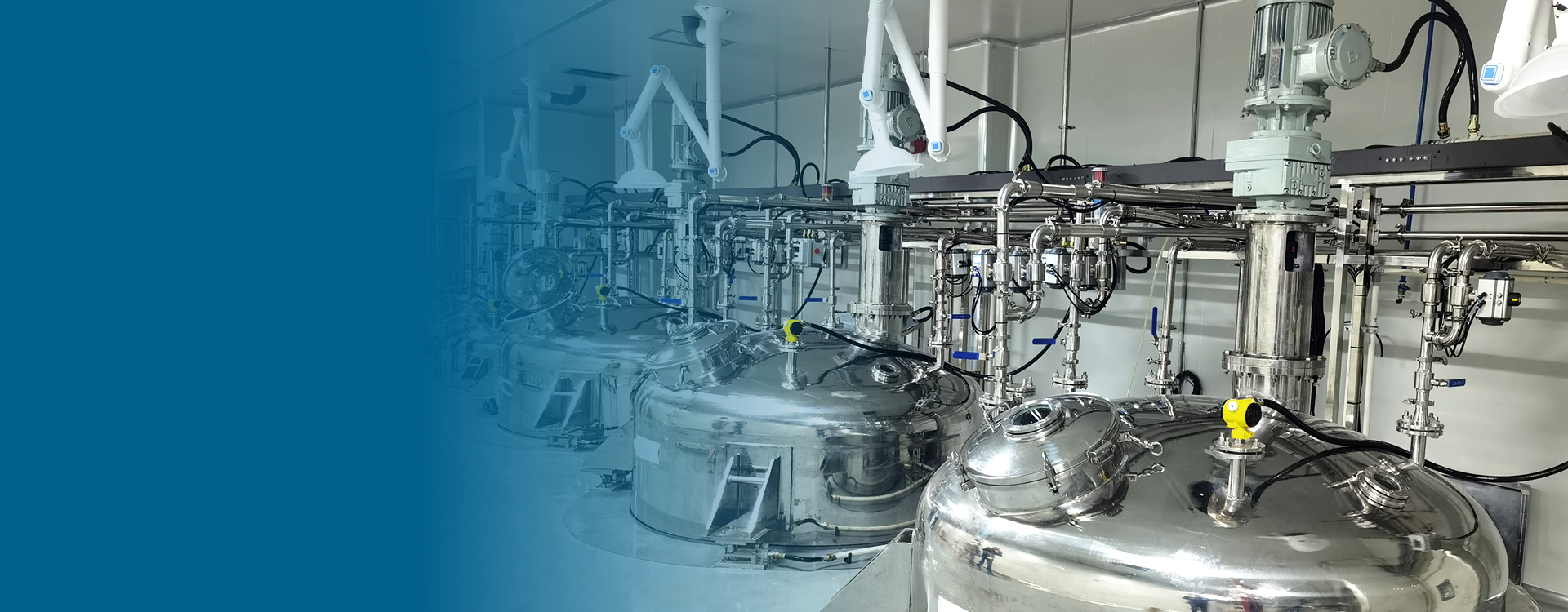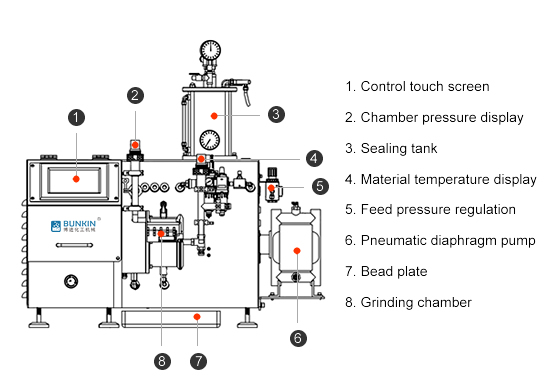
The laboratory nano bead mill is a high-precision wet grinding equipment tailored for scientific research scenarios, focusing on the core requirement of "nanoscale particle size control" in material research and development. With refined design and intelligent configuration, it has become a core tool for researchers in materials science, biomedicine, electronics and other fields to explore micro material properties. It breaks the limitations of traditional grinding equipment such as insufficient accuracy, high pollution risk, and weak adaptability, and provides stable and reliable grinding solutions for small batch and multi batch experimental research with the core advantages of "efficient grinding, precise temperature control, pure discharge, and flexible adaptation".
1.Ultra-high grinding efficiency
The equipment employs a high-strength stirring structure and special grinding media—high-purity zirconia beads. Through the shear, impact, and friction forces generated by high-speed rotation, it can rapidly refine material particles to the nanoscale, typically achieving a particle size range of 10-50 nanometers. Additionally, its optimized grinding chamber design minimizes material retention zones, combined with precise media filling rate control, enabling rapid and uniform nanoscale dispersion of materials within a short period, significantly reducing experimental cycles.
2. Wide Material Adaptability
The laboratory nano bead mill can achieve stable grinding by adjusting parameters such as stirring speed, media particle size, and grinding time, whether it's middle-to-high viscosity paste materials, low-viscosity liquid slurries, or mixed systems containing hard particles. In particular, when processing nanoscale powders prone to agglomeration (such as nano calcium carbonate, graphene, etc.), the equipment effectively breaks the van der Waals forces between particles, ensuring uniform dispersion of the material and providing a reliable sample foundation for subsequent experiments.
3. Precise Operation and Control Capability
The equipment is equipped with a high-precision frequency conversion speed regulation system, allowing flexible adjustment of stirring speed (typically ranging from 0 to 3000 rpm) based on material characteristics to avoid overheating of materials or accelerated wear of media due to excessive speed. Additionally, it features an intelligent control system capable of real-time monitoring of parameters such as temperature and pressure within the grinding chamber, enabling one-touch operation and data recording via a touchscreen for easy traceability and optimization of experimental parameters, thereby enhancing experimental reproducibility.
4. Convenient cleaning and maintenance design
The grinding chamber adopts a quick-release structure, combined with smooth inner wall materials (such as stainless steel, zirconia, silicon carbide, etc.), enabling rapid disassembly and cleaning to effectively prevent cross-contamination between different batches of materials, particularly suitable for scenarios involving alternating multiple experimental groups. Additionally, key components of the equipment (such as stirring shafts and seals) are made from wear-resistant and corrosion-resistant materials, extending service life and reducing maintenance frequency.
The laboratory nano bead mill refines micron sized materials to 50-500nm through "component collaboration+multi force action", relying on the coordination of grinding chamber, stirring system, grinding medium, separation device, and temperature control system. Add materials and dispersants in batches during work, stir at low speed for pre mixing, and allow the dispersants to adsorb onto the surface of particles to prevent agglomeration. Subsequently, the stirring system rotates at high speed, driving 0.2-0.5mm zirconia beads (with a filling rate of 70% -80%) to form a medium flow, generating three key forces: the shear force between the medium and the component tearing the particles, the impact force of the medium collision shattering the particles, and the grinding force of the medium friction refining the particle size. The standard material is pushed towards the discharge port under the pressure difference, and is separated from the medium by a sieve (pore size<medium particle size) before being discharged; If it fails to meet the standard, it will be repeatedly ground. The whole process temperature control system maintains the grinding chamber temperature at 25-40 ℃ through water/air cooling, avoiding the failure of dispersants or particle agglomeration caused by temperature rise, and achieving efficient nanoscale dispersion.

| Model | Power(Kw) | Speed (rpm) | Grinding chamber volume (L) | Zirconium bead filling amount(Kg) | Grinding medium size(mm) | Ultimate fineness (nm) | Feeding pump |
| NMWS-0.5 | 4 | 0-3430 | 0.5 | 1.35 | 0.2-2.0(95%High purity zirconia beads) | 50-500 | Diaphragm pump |
+86 13966796215 ( Hot Line )
+86 (0)551-67707017 ( Direct Line )
+86 13966796215